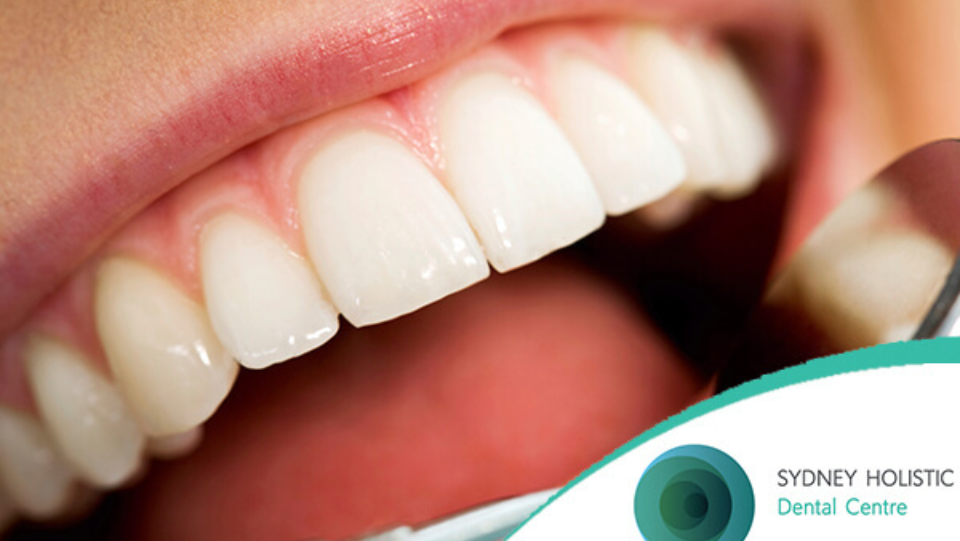What is a Holistic Dentist?
What is a Holistic Dentist?

This is the most common question we are asked. Dentistry is traditionally focused on the intricate and delicate work of maintaining a healthy oral cavity. This includes a regular oral cancer screening and ensuring that gum (gingival and periodontal) health is maintained. In addition, restoring teeth or replacing teeth that have been affected by tooth decay. We of course are also focused on that and it describes the majority of our work.
As holistic dentists, we have a philosophy of how we approach our practice and our patients, and the many connections between oral health and general health. With that in mind, a holistic dentist is primarily focused on the person attached to that oral cavity!
This informs decisions we make about treatments and how we advise our patients about their health.
A summary of the things we take into consideration includes:
- The role of nutrition in craniofacial development, dental disease and chronic degenerative diseases1, 2, 3 with a focus on nutrient-dense foods, and a diet primarily focused on vegetables, pasture-fed, ethically grown meat, healthy fats (e.g. butter, coconut oil, olive oil) and clean water.
- As the mouth is the gateway to the respiratory tract the relationship between craniofacial development, the effect on breathing, posture and sleep disordered breathing, and health outcomes together with possible treatments using dental devices are profound 4, 5, 6, 7, 8, 9, 10, 11, 12, 13, 14
- The mouth is also highly vascular and the site of the two most common human infections, periodontal disease 15, 16, and tooth decay17, 18, 19 the implications of chronic oral inflammation and infections on various disease states throughout the body and systemic health are becoming increasingly well documented 20, 21, 22, 23.
- Dentists implant more material into people’s bodies than all other professionals – in the form of dental restorative materials, and thus the potential for toxicity and biocompatibility issues need to be considered 24, 25, 26, 27, 28,
- The orofacial region is highly innervated with a third of the body’s sensory and motor cortex focused on this region as well as many connection between the central nervous system and the autonomic nervous system. Structural imbalances in the jaw have the potential to impact on health in general and particularly neuromuscular activity. A review of chronic musculoskeletal pain conditions such as headaches, neck aches and jaw ache and its relationship to increased oral and cervical(neck) muscle activity (e.g. nocturnal bruxism/clenching or grinding) is often an important perpetuating factor in these conditions 29, 30, 31, 32.
- A regular monitoring of oral cancer 33, 34, 35
The Sydney Holistic Dental Centre Mission
Our practice is patient-centred, treating every patient and team member with care, respect and support in a relaxed and comfortable environment.
Our aim is to provide optimal oral health care to enhance our patient’s general health.
Our team will provide high quality state-of-the-art care and advice, which is relevant to our patient’s needs.
We keep our knowledge and skills current and impart that to our patients.
Further Reading:
1 Nutrition and Physical Degeneration 8th Edition . Weston A Price. Price Pottenger Foundation 2011
2 The functional matrix hypothesis revisited. 1. The role of mechanotransduction. Melvin L. Moss DDS, PhD. Am J Orthod Dentofac Orthop 1997;112:8-11
3 The functional matrix hypothesis revisited. 4. The epigenetic antithesis and the resolving synthesis. Melvin L. Moss DDS, PhD Am J Orthod Dentofac Orthop 1997 Oct;112(4):410-7.
4 Respiratory function in relation to facial morphology and the dentition. Linder-Aronson, S. British journal of orthodontics Volume 6, Issue 2, April 1979, Pages 59-71
5 A comparison between mouth and nose breathers with respect to occlusion and facial dimension Linder-Aronson S, Backstrom A. Odontol Rev 1960;11:343-76.
6 Mouth breathing in allergic children: Its relationship to dentofacial development Bresolin et al. Am J Orth. 1983:83;4;334-340
7 Rapid Maxillary Expansion for the Treatment of Nasal Obstruction in Children Younger Than 12 Years. Monini et al Arch Otolaryngol Head Neck Surg. 2009;135(1):22-27
8 Changes in nasal airway resistance associated with rapid maxillary expansion. Hershey et al. Am J Ortho 1976, 69(3):274-84
9 Relationship Between Surface Facial Dimensions and Upper Airway Structures in Obstructive Sleep Apnea. Lee et al. Sleep. 2010 September 1; 33(9): 1249–1254.
10 The effect of mandibular advancement on upper airway structure in obstructive sleep apnoea. Chan et al. Thorax 2010;65:726-732
11 Mandibular advancement device in patients with obstructive sleep apnea : long-term effects on apnea and sleep. Marklund et al. Chest 2001 Jul;120(1):162-9.
12 Effectiveness of mandibular advancement appliances in treating obstructive sleep apnea syndrome: A systematic review. Serra-Torres el. Laryngoscope 2016 Feb;126(2):507-14.
13 Short Sleep Duration Is Associated with Reduced Leptin, Elevated Ghrelin, and Increased Body Mass Index. Taheri et al. PLoS Med 1(3): e62. doi:10.1371/journal.pmed.0010062
14 The Comparison of Patients Suffering From Temporomandibular Disorders and a General Headache Population D Haley et al. Headache 33 (4), 210-213. 4 1993
15 Prevalence and severity of gingivitis in American adults. Li et al. Am J Dent 2010 Feb;23(1):9-13
16 Prevalence of Periodontitis in Adults in the United States: 2009 and 2010. Eke et al. Journal of Dental Research.2012:10,914-920
17 NIH 1999-2004 National Health & Nutrition Examination Survey http://www.nidcr.nih.gov/DataStatistics/FindDataByTopic/DentalCaries/DentalCariesAdults20to64.htm
18 NIH/NIDCR Dental Caries in Seniors Aged 65 and over https://nidcr.nih.gov/DataStatistics/FindDataByTopic/DentalCaries/DentalCariesSeniors65older.htm
19 Global burden of oral of oral conditions in 1990-2010: a systematic analysis Marcenes et al. J Dent Res. 2013 Jul;92(7):592-7
20 Periodontal disease and Systemic Conditions: a bidirectional relationship. J Kim, S Amar. Odontology (2006) 94;10-21
21 Treatment of periodontal disease results in improvements in endothelial dysfunction and reduction of the carotid intima-media thickness. Piconi et al. FASEB April 2009 23:1196-1204
22 Infections as a stimulus for coronary occlusion, obstruction, or acute coronary syndromes. Pesonen E, El-Segaier M, Persson K, et al. Ther Adv Cardiovasc Dis. 2009 Sep 22.
23 Good Smile, Healthy Brain? Souvik Sen and Lauren Dennis Giamberardino. J Neurol Disord 2016, 4:2
24 Environmental Health Criteria 118; Inorganic Mercury – World Health Organisation, Geneva 1991. Page 36
25 Ivoclar Dental Mercury Amalgam Material Safety Data Sheet 2011
26 NHMRC Dental Amalgam – filling you in October 2002 https://www.nhmrc.gov.au/guidelines-publications/oh18
27 Australasian Integrative Medicine Association Position Paper on Mercury Amalgam 2011 https://www.aima.net.au/wp-content/uploads/2012/02/mercury_aima_position_paper_on_mercury_amalgam/_final_20111.pdf
28 Biocompatibility of Dental Amalgams. Ucar Y and WA. Brantley WA. International Journal of Dentistry Volume 2011, Article ID 981595, 7 pages
29 Principles of Anatomy and Physiology . G.J.Tortora & N.P Anagnostakos Harper & Row 5th Edition 1987
30 Myofascial Pain & Dysfunction – The Trigger Point ManualJ. Travell & D. Simmons . Williams & Wilkins 1992
31 Textbook of Orthopaedic Medicine – Volume One – Diagnosis of Soft Tissue Lesions. James Cyriax. Balliere Tindall 1982
32 The effect of jaw clenching on EMG Activity of 2 neck and 2 trunk muscles. David Garlick and Mark Ninio. J.Orofacial Pain 1999;13:115-120
33 Global cancer statistics. Jemal et al. CA: A Cancer Journal for Clinicians 2011 Vol. 61; 6; pp69-90
34 Increasing incidence of oral cancer amongst young persons: what is the aetiology? Mackenzie et al. Oral Oncology 2000 Vol 36;4;pp69-90
35 A review of the relationship between tooth loss, periodontal disease and cancer. Meyer et al. Cancer Causes Control (2008) 19;895-907


